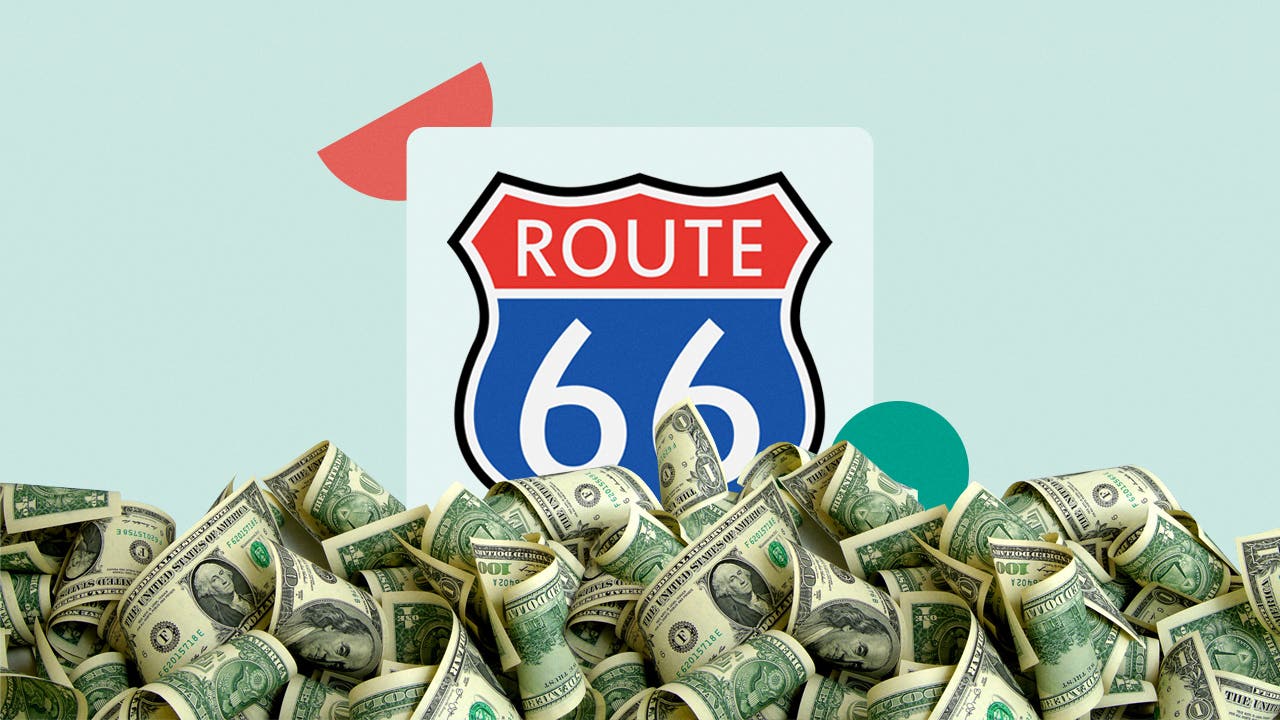U.S. states unequally burdened by credit card debt

Even though it looks like the U.S. has managed to dodge a recession heading into 2024, consumers are still dealing with higher prices initially brought about by the COVID-19 pandemic, which resulted in supply chain issues and the mismatch between supply and demand. As a result, in spite of the overall better economic outlook, it appears Americans entered 2024 on a note of financial anxiety.
In many cases, it seems as if higher prices have caused consumers to turn more to credit cards as a ready means of making ends meet. In fact, credit card balances outstanding have been rising in recent years, hitting a high of $1.13 trillion for the fourth quarter of 2023, according to the Federal Reserve Bank of New York.
But while that may be true of the country as a whole, the burden of credit card debt is not shared equally by residents of each U.S. state. To better understand the state-level situation, Bankrate conducted a study ranking each state’s credit card debt burden, taking into account each state’s average credit card balance and average household income.
While this study provides an understanding of the states in which it is easier and harder for consumers to pay off their credit card debt, it is by no means a proxy for the financial well-being of individual families at the state level.
Key insights
- Louisiana, Mississippi, Oklahoma and West Virginia are the most burdened states based on our methodology, though none of these states have exceptionally high average credit card balances.
- The states that are most debt burdened don’t necessarily have the highest credit card debt balances. Rather, they’re the ones where it takes the longest to pay off the card debt, according to the study’s guideline of dedicating 5 percent of the average monthly income in each state toward that state’s average credit card balance.
- The least debt burdened state is Massachusetts, followed by Minnesota, New Hampshire, California and New Jersey. These states generally have middle-of-the-pack credit card balances and high incomes.
- Eight of the 10 most burdened states voted for Trump in 2020; nine of the 10 least burdened states voted for Biden.
What do we mean by credit card debt burden?
The goal of this study was to identify the states in which credit card debt is easier to pay off, as well as those where consumers are more hard-pressed to pay off their debts. As a result, this is not a basic ranking of which states have the highest and lowest credit card debt, although that is one of the primary inputs. The average credit card debt data used in our analysis comes from TransUnion, but additional inputs were used as well.
We have also taken into consideration Census data on average household incomes to gauge overall debt burdens. For instance, it is generally easier to pay off $5,000 in credit card debt if you make $100,000 annually than it is to pay off that same amount of debt if you only make $50,000 per year. In this study, we’ve assumed that 5 percent of the average family’s gross monthly income goes toward credit card debt, based on a scenario in which cardholders are making more than their minimum payments monthly, but not quite paying off their entire card balance. In fact, Bankrate data shows that 44 percent of cardholders carried a balance from month to month in January 2024.
Projecting out that 5 percent of gross monthly income rule would have families out of credit card debt in two years, assuming they stuck to that repayment schedule and did not take on any additional debt.
Finally, we sorted state debt burdens by the number of months required to pay off their average credit card debt. We consider the states that took the longest to pay off the debt the most debt burdened. In case two states were tied based on months to pay off debt, we consider the one that pays more in interest to be more burdened than the other. This is the same methodology that was used in the 2023 version of this study, published on our sister site CreditCards.com.
Average credit card debt burden by state
Use this interactive chart to see how each state measures up in each category.
This data tells a tale about each state’s credit card debt burdens. For one, the South doesn’t do well on this front. Louisiana, Mississippi, Oklahoma and West Virginia are among the most burdened states, based on our methodology. While these states don’t have very high average credit card balances compared to other states, all four have very low average incomes — ranking among the seven lowest, in fact.
The least burdened states in our study are Massachusetts, Minnesota, New Hampshire, California and New Jersey. These states generally have high incomes, while their credit card balances tend to place in the middle of the group.
Looking at the data from a political angle, the most burdened states seem to lean towards Donald Trump, with eight of the 10 most-burdened states voting for him in 2020. On the other hand, the least burdened states seem to lean Democratic, with nine of the 10 least burdened states (plus Washington, D.C.) voting for Joe Biden.
How to tackle credit card debt
You may be carrying too much credit card debt yourself if you find yourself unable to service your debt and keep up with your card payments. In fact, the overall delinquency rate on credit card debt has gone up in recent months, reaching 3.1 percent in the fourth quarter of 2024, according to the Federal Reserve Bank of New York.
Carrying the burden of excessive credit card debt means you will have less money to put towards savings. That might, for instance, hold you back from saving for a down payment on a house. Among other negative consequences, you will also have less to spend on hobbies and pastimes, since your discretionary income will be eaten up by your card payments.
While it's generally easier to pay off credit card debt if you have a higher income, I'd stress that everyone can pay off credit card debt — and probably quicker than they think. Even in the most burdened states, by dedicating 5 percent of gross monthly income to credit card debt payoff each month, the average household will be debt-free within two years.— Ted Rossman | Bankrate Senior Industry Analyst
On the other hand, if you only make minimum payments toward the average credit card balance ($6,140) at the average interest rate (just under 21 percent), you’ll be in debt for more than 17 years, Rossman points out.
Here are some other tactics you could adopt to pay down your credit card debt faster and cut down on interest payments:
- Sign up for a balance transfer card or a card with a 0 percent promotional period.
- Turn to debt relief strategies such as working with a reputable nonprofit credit counseling agency.
- Take on a side hustle, such as becoming a dog walker or rideshare driver.
- Sell items you don’t need or cut down on expenses, perhaps by canceling a streaming service you don’t use a lot.
- Use an upcoming cash influx you’re expecting, such as a tax refund, to make inroads into your debt.
Moving to an area with higher average salaries may also help, though that’s not an option for everyone — and higher salaries may come with higher costs overall.
Methodology
Why we ask for feedback Your feedback helps us improve our content and services. It takes less than a minute to complete.
Your responses are anonymous and will only be used for improving our website.






